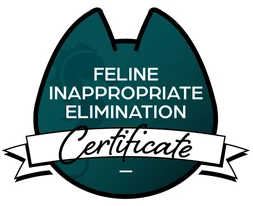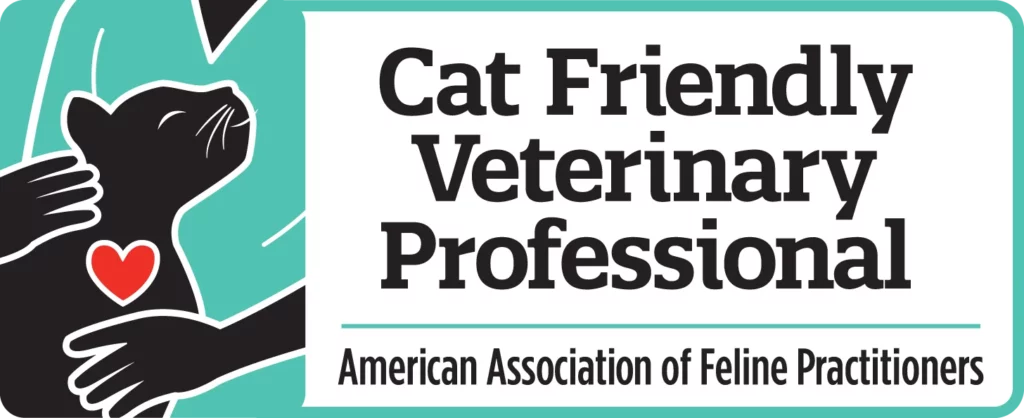Cats are curious creatures. It’s not uncommon for that curiosity to result in chewing on plants when bored. Some cats may also have a natural tendency to chew on plants more than others. While chewing on some plants, such as cat grass or the ‘nip, may be totally fine for your kitty, chewing on plants can be dangerous or have serious health risks if the houseplants are toxic to cats.
If you’re struggling to keep your feline friend from nibbling on your greenery, fear not! I have some tips you can use to train your cat to leave your plants alone so you can have a home jungle without having to worry about your cat’s safety.
Which plants are safe for cats?
Let’s start with the most important step in the whole process: every plant that enters your home should undergo a thorough background check as toxic houseplants are one of the most common household dangers for cats. Failure to do so can cause serious health problems if the plant is ingested by your cat. A great starting point is the ASPCA’s Toxic and Non-Toxic Plant List. You can search for the plant by common or scientific name to make sure you’re screening them.
Many plant shops may label their plants as being pet safe to make things easier on prospective plant parents. If you aren’t sure, check with your veterinarian.
When selecting cat safe houseplants, you also want to consider if the plant may be a bit too tempting for your cat to resist nibbling on. For example, some cats may be interested in playing with leaves or flowers while others may think vining plants are irresistible. According to Veterinarians.org, some safe options include spider plants, hoyas, and African violets. I personally have all three of these plants and love them! Hoyas are my favorite as they have some amazing flowers and aren’t too challenging to grow.

However, it’s important to keep in mind that even plants that are safe for cats may still cause digestive upset if ingested in large amounts. As such, it’s always a good idea to consult with your veterinarian to ensure that any plants you bring into your home are safe for your furry friend.
How do I stop my cat from chewing on my plants?
First, let’s get this part out of the way: punishment-based methods are not recommended as they can lead to fear and anxiety in cats. Causing your cat to be afraid is not only rather rude, but it can also lead to other unwanted behaviors. Punishing your cat also doesn’t satisfy whatever need the cat is trying to meet. You may end up with a cat chewing on a different plant or on something even more dangerous like electrical wires. Instead of trying to punish or squirt the behavior away, you want to focus on rewarding the behaviors you want and redirecting the chewing.
You can do this in a variety of ways, but I love using a toy to get the cat’s attention elsewhere. Play gives them something to focus on instead of the plant and teaches them what’s acceptable to bite at. You can also grow some cat grass so they do have something planty they can nibble at. Cat grass is safe for cats to chew and may even have other benefits for them beyond being a cat enrichment activity.
For voracious chewers, there are solo play chew toys you can get your cat to chew on available. When in doubt, turn to drugs. For cats, drugs aren’t as shady as they sound! Silver vine is a great option as it is available as chew sticks for cats. It does a bit of the work of redirecting your cat for you as, if your cat responds to silver vine as 80% of cats do, they will naturally be drawn into the stick without much effort on your part.
Reduce boredom in your cat
Playing with your cat and providing alternative outlets to chew has an added bonus. Play is mentally stimulating so your cat will be less likely to try to find creative ways to occupy their time. Plus, interactive play builds your bond with your cat!
If you’re looking for ways to get your cat more engaged in play, check out Play With Your Cat by Mikel Delgado. It’s a great resource for learning about why play is so important to cats and how to play in a satisfying way.
Passive Boredom Reduction
If you can’t actively play with your cat, a little bit of cat TV may help. You can set your cat up with videos meant specifically for a cat, though make sure your cat won’t accidentally knock over the device you’re playing them on! A tablet is a great way to play cat videos, especially if you set your cat up with a fun video game to play.
Alternatively, you can bring live cat TV (cat theater, perhaps it should be called?) to your cats. Getting a bird feeder set up outside will help draw birds to watch in your yard. I personally have a window mounted bird feeder that I use as it draws the birds right to your cat (if your cat keeps scaring away the birds, you can try a one way mirror cling film over the window). Because I’m easily suckered into buying anything that’s cat or cat shaped, I also have an adorable cat shaped bird feeder to really get the birds to come say hi so if you’re looking for something aesthetically pleasing and cat themed, it’s the way to go!
If you want to get really fancy, there are bird feeders that allow the birds to actually come into your house… kind of. They look like a wheel of cheese and create an alcove that the birds will fly into to eat. You typically install them into a window and often don’t need to do any actual construction. Some even come with one way mirrors already built in so your cat won’t spook the birds, but gets all the thrill of being able to watch the birds up close.
A little bonus tip about using bird feeders for cat entertainment: be patient. When I installed my bird feeders, it took a few weeks for the birds to discover them. Now, as long as I keep up with keeping them filled with seeds, there’s a gang of about 10 birds that come by regularly. I like to call them Zoloft’s friends, though I suspect he actually wants to murder and eat his friends.
Keeping plants out of reach
If you’re worried about your cat’s safety around your plants, try moving them to a room or area that’s off-limits to your cat, or placing them out of reach. This is probably your easiest solution for even non-toxic plants for cats so anything you don’t want your cat damaging should be sequestered away regardless of toxicity. Some plants, such as lilies, are so dangerous that it’s a good idea to keep them out of the house entirely.
If you want some greenery in rooms your cat does have access to, consider making use of spaces your cat can’t get to. I personally have cactuses on top of a bookshelf that’s too high for Z to jump on top of and also make use of a lot of hanging plants.
You can either buy hanging planters (including a cute cat shaped one or even one shaped like a disco ball) or turn a planter you already own into a hanging pot. A basic macrame hanger isn’t too challenging to make once you get the basic knots down. I’ve also crocheted hangers for some of my plants. To hang them, you can use a wall hook or, if you have metal to hang them off of, a magnetic hook.
There are also great options of planters specifically made for a wall that I’ve found work well at not only keeping tempting vining plants off the ground but expanding the amount of space you have for plants. If you live in a small space and you’re anything like me, having the extra plant space is a huge bonus.
Train your cat to leave your plants alone
Cats respond really well to positive reinforcement to get them to do behaviors you want them to do. When your cat is ignoring your plants, make sure to praise and reward them with a treat or affection. This reinforces the idea that not interacting with the plants is desirable and leads to positive outcomes. Over time, they’ll be more likely to choose other things besides eating your plants.
Alternatively, you can train your cat to do a behavior that’s incompatible with munching on a plant. Most commonly, this would be something like coming when called. You can then cue that behavior if your cat is giving your plants “the look.” Just make sure you also cue the behavior at other times so your cat doesn’t think they get cued only when they’re going after the plants.
If you’re struggling to train your cat, consider hiring a certified cat behavior specialist like myself who offers virtual consultations so they can meet with you wherever you’re located. This allows you to receive expert guidance and support from the comfort of your own home.
It is possible to keep your cat safe and healthy while still having beautiful houseplants. You may need to combine a few different methods, but getting your cat to leave your plants be is absolutely achievable with some patience. You’ll soon have a home filled with purrs and greenery!










